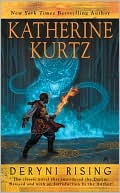This would be Stacking the Shelves, the Dragon*Con edition. I say it’s the Dragon*Con edition for a couple of reasons.
 The first is simply because I was at Dragon*Con over Labor Day weekend, and didn’t do a Stacking the Shelves post. Romance at Random started their Labor Day Blog Hop, and Reading Reality was a participant. There’s still plenty of time to enter, so hop on over to the post and take a look at the giveaway.
The first is simply because I was at Dragon*Con over Labor Day weekend, and didn’t do a Stacking the Shelves post. Romance at Random started their Labor Day Blog Hop, and Reading Reality was a participant. There’s still plenty of time to enter, so hop on over to the post and take a look at the giveaway.
About Dragon*Con. Downtown Atlanta looked like it had been invaded by aliens. I’ve been to big cons (Chicago holds three a year) but nothing like this. 50,000+ fen is a lot of fen. (For those unfamiliar, fen is the collective noun for science fiction fans)
 While I did go to a couple of media tie-in events (any Mythbusters fans in here?) there were a bunch of authors I wanted to see. Mercedes Lackey and Katherine Kurtz in particular. I’ve been reading both their signature series since Arrows of the Queen and Deryni Rising, respectively. It was awesome to see them in person.
While I did go to a couple of media tie-in events (any Mythbusters fans in here?) there were a bunch of authors I wanted to see. Mercedes Lackey and Katherine Kurtz in particular. I’ve been reading both their signature series since Arrows of the Queen and Deryni Rising, respectively. It was awesome to see them in person.
And great to meet authors whose books I have reviewed, like James R. Tuck. He was terrific, and I think even remembered my review. I’m pretty I’m going to finally review Blood and Silver this week. Damn it was good.
Speaking of his reading, he had all his friends who were authors also read from their books, so I picked up Delilah S. Dawson’s Wicked as they Come from her at that panel. And started it immediately, finished it and reviewed it this week. Decadently delicious.
So what delicious books have you added to your stacks this week?
 For Review:
For Review:
When Snow Falls (Whiskey Creek #2) by Brenda Novak
Wife for Hire by Christine Bell
Thrones of Desire: Erotic Tales of Swords, Mist and Fire edited by Mitzi Szereto
The Scientific Sherlock Holmes by James O’Brien
Daring Greatly by Brené Brown
City of Dark Magic by Magnus Flyte
All He Ever Needed (Kowalski Family #4) by Shannon Stacey
Racing With the Wind (Agents of the Crown #1) by Regan Walker
The Cowboy and the Vampire by Clark Hays and Kathleen McFall
The Walnut Tree by Charles Todd
Forge (Thrall Web #1) by T.K. Anthony
Spice and Smoke (Bollywood Confidential #1) by Suleikha Snyder
Spice and Secrets (Bollywood Confidential #2) by Suleikha Snyder
Babylon Confidential by Claudia Christian
Clean (Mindspace Investigations #1) by Alex Hughes (print)
Operation: Endgame (When the Mission Ends #1) by Christi Snow
A Date with Death (1Night Stand) by Louisa Bacio
Forty Shades of Pearl by Arianne Richmonde
Seven Nights in a Rogue’s Bed (Sons of Sin #1) by Anna Campbell
Rapture (Bel Dame Apocrypha #3) by Kameron Hurley
Purchased:
Interview with a Jewish Vampire by Erica Manfred (free)
My Vampire Cover Model by Karyn Gerrard
The Lost Night (Rainshadow #2, Harmony #9) by Jayne Castle
Wicked As They Come (Blud #1) by Delilah S. Dawson (print, signed by the author at Dragon*Con)
Thieftaker (Thieftaker Chronicles #1) by D.B. Jackson (print, signed by the author at Dragon*Con)
Intentional Abduction (Alien Abduction #2) by Eve Langlais (free to Dragon*Con attendees!)

![STSmall_thumb[2]_thumb](https://www.readingreality.net/wp-content/uploads/2012/09/STSmall_thumb2_thumb-300x170.png)

